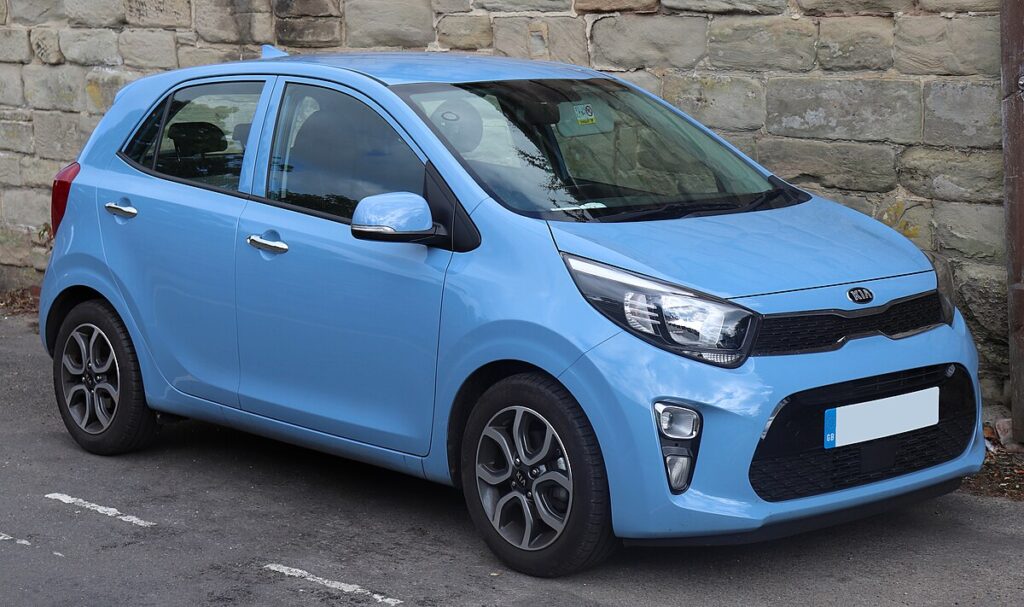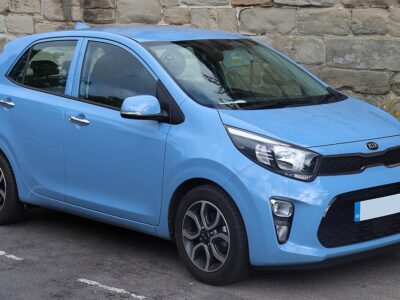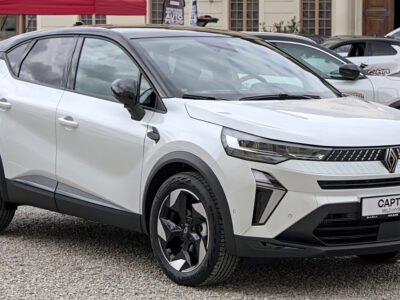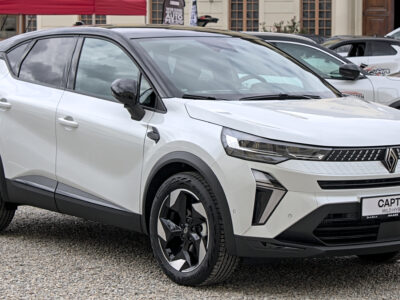
Kia Picanto Reliability: The Complete Long-Term Ownership & Reliability Guide

- Understanding the Kia Picanto’s Real-World Reliability
- Why the Kia Picanto Has Built a Strong Reliability Reputation
- Key Factors Driving the Picanto’s High Reliability Score
- Kia Picanto Reliability Index Explained
- Common Kia Picanto Issues Over Time
- Engine & Drivetrain Reliability
- Electrical System Reliability
- Suspension & Steering Longevity
- Brake System Reliability
- Bodywork & Interior Reliability
- Average Repair Costs for the Kia Picanto
- Kia Picanto Long-Term Reliability by Generation
- Kia Picanto Reliability: Strengths & Weaknesses at a Glance
- Why Having a Warranty Helps Kia Picanto Owners
- Is the Kia Picanto a Reliable Long-Term Buy?
- FAQs
Understanding the Kia Picanto’s Real-World Reliability
We view the Kia Picanto as one of the most compelling city cars on the market, and its reliability record is a major reason behind its loyal following. Behind the compact dimensions and playful character lies a vehicle engineered to withstand the rigours of urban driving—stop-start traffic, tight manoeuvres, and constant short trips. By analysing long-term owner reports, typical repair patterns, historical failure points and maintenance cost data, we uncover exactly how the Picanto performs when it comes to mechanical durability, electrical stability, and overall dependability.
Why the Kia Picanto Has Built a Strong Reliability Reputation
The Picanto’s simplicity works heavily in its favour. We’re dealing with lightweight mechanicals, relatively unstressed engines, and a chassis designed to handle daily use with minimal wear. Across generations, Kia has consistently refined build quality, improved corrosion protection, and invested heavily in extended component durability. As a result, its reliability performance sits comfortably above many city-car rivals.
Key Factors Driving the Picanto’s High Reliability Score
- Naturally aspirated engines with low thermal stress
- Straightforward suspension architecture
- Robust manual gearboxes
- Economical maintenance schedules
- High-quality electrical architecture in newer models
- Kia’s progressive improvements in component longevity
These factors collectively position the Picanto as a dependable long-term companion for both urban commuters and new drivers.
Kia Picanto Reliability Index Explained
To help owners better understand the Picanto’s reliability landscape, we break down how typical faults emerge, how often they occur, and the average cost of fixes. The goal is to give Picanto drivers a precise outlook on maintenance planning, helping them stay ahead of potential repairs.
What the Reliability Index Measures
- Frequency of repairs
- Severity of faults
- Average repair cost
- Systems most likely to require attention
- Annual probability of experiencing a fault
Typical Reliability Index Scores
In real-world assessments, the Picanto regularly scores toward the green end of reliability charts, placing it significantly above class averages. While not fault-free, its issues tend to be inexpensive and straightforward to repair.
Common Kia Picanto Issues Over Time
Although the Picanto is generally robust, certain recurring themes appear across different model years. Understanding these helps owners prepare, anticipate, and prevent bigger problems.
Engine & Drivetrain Reliability
Engine Durability
Picanto engines—1.0 MPi, 1.25 MPi, and the later 1.0 T-GDi—are known for smooth performance and long-term reliability. Failures are rare when serviced on schedule.
Common Engine-Related Issues
- Coil pack failures (typically around high-mileage usage)
- Occasional idle instability caused by carbon buildup
- Thermostat housing leaks on early models
- EGR-related rough running (mainly on older versions)
Transmission Reliability
Manual Gearbox
The manual transmission is one of the Picanto’s strongest reliability features. Clutch wear is normal over time, but catastrophic failures are uncommon.
Automatic Transmission
AMT and traditional torque-converter units are dependable but require fluid changes to ensure long life.
You may be interested in reading Are Kia Picanto Parts Expensive?
Are Kia Picanto Parts Expensive?Electrical System Reliability
Even though newer Picantos are packed with modern technology, electrical reliability remains a strong point.
Common Electrical Problems
- Failing window regulators
- Blower motor resistor issues causing loss of fan speeds
- Intermittent central locking malfunctions
- Infotainment screen freezes on facelift models
These tend to be minor issues rather than major electrical failures.
Suspension & Steering Longevity
Urban driving exposes city cars to potholes and uneven surfaces, yet the Picanto’s suspension setup is impressively resilient.
Most Common Wear Components
- Front anti-roll bar links
- Rear shocks on higher-mileage cars
- Steering rack noise from worn bushings
Repairs are generally inexpensive and rarely lead to extended downtime.
Brake System Reliability
Braking components wear predictably and rarely suffer premature failure.
Expected Wear Patterns
- Front discs and pads need more frequent replacement in city use
- Handbrake cables may require adjustment on older models
- Rear drums (where fitted) are long-lasting
Bodywork & Interior Reliability
Corrosion Resistance
Later Picanto generations exhibit strong rust protection. Early first-gen models needed closer attention around wheel arches and sills, but modern versions show minimal corrosion issues.
Interior Durability
The cabin is designed with longevity in mind:
- Upholstery holds up well to daily wear
- Switchgear remains sturdy even after years of use
- Plastics resist UV fading better than many rivals
Average Repair Costs for the Kia Picanto
To help owners budget accurately, we break down typical repair costs across the most common systems:
| System | Typical Repair Cost (UK) |
|---|---|
| Engine Coil Pack | £90–£150 |
| Suspension Link Rods | £45–£90 |
| Clutch Replacement | £350–£550 |
| Alternator | £250–£400 |
| Starter Motor | £180–£300 |
| Window Regulator | £120–£250 |
| A/C Re-gas | £80–£120 |
| Brake Pads & Discs | £160–£260 |
The Picanto’s affordability extends beyond purchase price—its upkeep is notably cost-effective compared to rivals.
You may be interested in reading Are Kia Picanto Parts Expensive?
Are Kia Picanto Parts Expensive? Is the Kia Picanto Good for Long Drives? The Complete Long-Distance, Highway & Motorway Performance Guide
Is the Kia Picanto Good for Long Drives? The Complete Long-Distance, Highway & Motorway Performance GuideKia Picanto Long-Term Reliability by Generation
First Generation (2004–2011)
Known for simplicity and toughness, but more prone to:
- Rust
- Electrical quirks
- Basic suspension wear
Second Generation (2011–2017)
Significant leap in build quality:
- Stronger electrics
- Improved corrosion protection
- More refined drivetrain
Third Generation (2017–Present)
The most reliable and advanced Picanto to date:
- Excellent electronics
- Strong engine lineup
- Lower incidence of major faults
Kia Picanto Reliability: Strengths & Weaknesses at a Glance
Strengths
- Highly dependable engines
- Low running costs
- Affordable parts and repairs
- Strong build quality for its class
- Great reliability progression across generations
Weaknesses
- Minor electrical glitches
- Occasional suspension wear
- Some infotainment system issues
- Clutch wear on traffic-heavy routes
Why Having a Warranty Helps Kia Picanto Owners
Even though the Picanto is reliable, unexpected failures can still catch drivers off guard. A warranty acts as a financial buffer, particularly valuable when dealing with sudden component failures.
Key Warranty Advantages
- Protection against sudden repair costs
- Coverage for common electrical and mechanical issues
- Access to approved UK garages
- Boosted resale value with warranty in place
- Peace of mind during daily use
Is the Kia Picanto a Reliable Long-Term Buy?
Yes. The Picanto stands as one of the most reliable and cost-efficient small cars available. It’s engineered for city life, inexpensive to maintain, and supported by robust mechanicals. Whether you’re planning to own it for three years or ten, it rewards drivers with predictability, durability, and very few unwelcome surprises.
FAQs
1. Does the Kia Picanto suffer from major engine problems?
Major failures are rare. Most engine-related issues are minor and inexpensive.
2. How expensive is the Picanto to maintain annually?
Annual maintenance is among the lowest in its class, typically ranging between £150 and £350 depending on usage.
3. Is the Kia Picanto good for high-mileage driving?
While designed as a city car, many high-mileage Picantos remain reliable with proper servicing.
4. What is the most common problem with the Picanto?
Minor electrical issues—such as window regulators or blower resistors—occur more frequently than mechanical failures.
You may be interested in reading Are Kia Picanto Parts Expensive?
Are Kia Picanto Parts Expensive? Is the Kia Picanto Good for Long Drives? The Complete Long-Distance, Highway & Motorway Performance Guide
Is the Kia Picanto Good for Long Drives? The Complete Long-Distance, Highway & Motorway Performance Guide Volkswagen T-Cross Reliability Guide: The Complete, Data-Driven Analysis for Buyers in 2024–2025
Volkswagen T-Cross Reliability Guide: The Complete, Data-Driven Analysis for Buyers in 2024–20255. Which Picanto generation is the most reliable?
The third generation (2017–present) consistently shows the strongest reliability performance.
If you want to know other articles similar to Kia Picanto Reliability: The Complete Long-Term Ownership & Reliability Guide you can visit the category Blog.
Deja una respuesta






More content of your interest